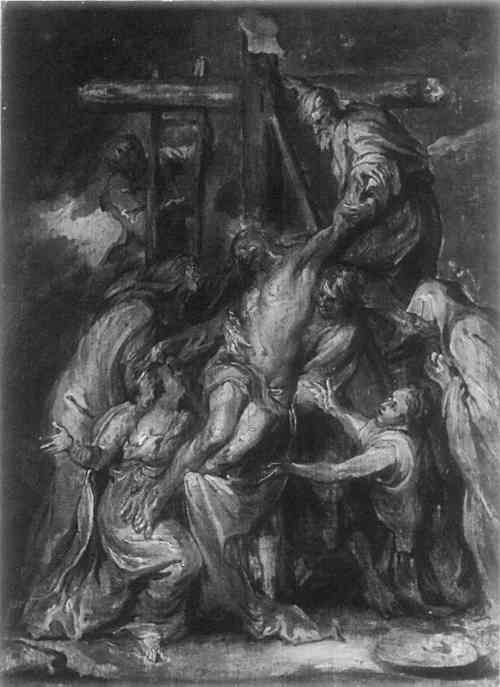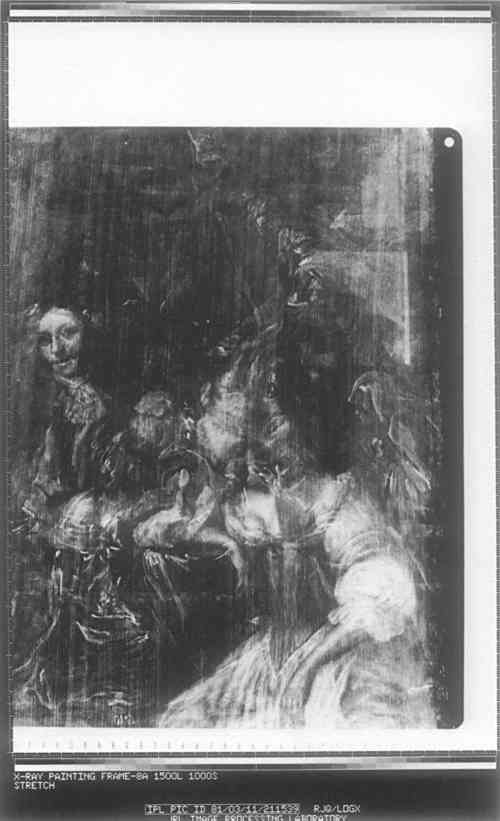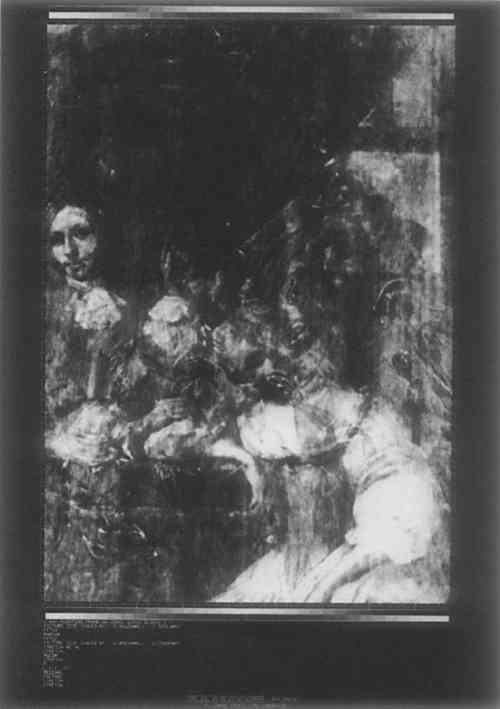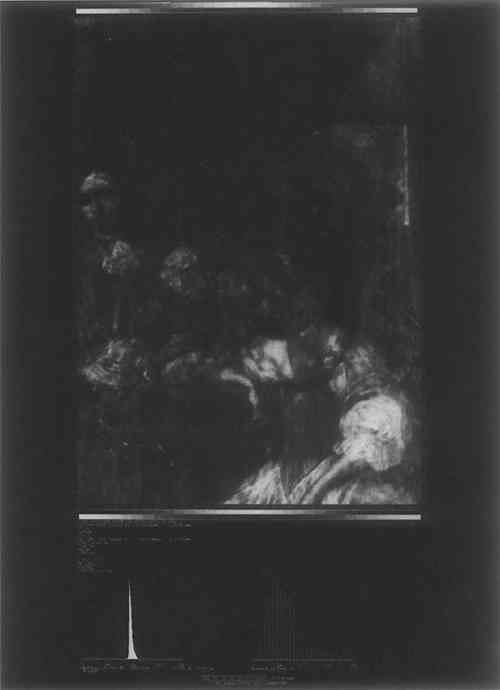THE USE OF DIGITAL IMAGE PROCESSING TO CLARIFY THE RADIOGRAPHY OF UNDERPAINTINGJames R. Druzik, David L. Glackin, Donald L. Lynn, & Raim Quiros
3 APPLICATION OF IMAGE PROCESSING TO PAINTING CONSERVATIONFIGURE 1 shows a grisaille painting, “The Deposition” formerly attributed to Van Dyck. Jan Erasmus Quellinus (1634–1715) has been suggested;2 in any case it is technically attributable to the period. Conservation treatment records indicate that in 1975, mass spectrometric analysis of a sample of white and red pigment indicated basic lead carbonate and mercuric sulphide.
The x-ray radiography revealed that there are two painting structures (Fig. 2); the lower one on wood panel, appears to be a sitting room scene. “The Deposition” is painted on paper (100% linen fiber by microscopic examination) which has been adhered over the lower image. Two objectives necessary to restore the confused x-ray image were defined: first, to remove or suppress the wood grain pattern interference, and secondly, to separate the two images, isolating each one digitally and photographically. In order to try this strategy one additional x-ray technique was utilized to give the IPL more raw data from which to work; that is a secondary electron emission radiograph.
3.1 Removal of the Wood Grain Striations from the X-ray ImageThe oak panel support created a series of striations in the x-ray image. Figure 2 is a contrast-enhanced version of this image. The striations are roughly straight, roughly vertical, and evenly spaced. If they were precisely so, they would be relatively The first method tried, which did not work, involved using a median filter one pixel high and a few pixels (5–9) wide. The second method, which produced excellent results, is a two-dimensional Fast Fourier Transform. This method produced a photographic plot which shows the size distribution of features in the original image. The wood grain was the only feature being periodic; thus with this data a mathematical filter could be constructed which removed this high frequency pattern. Figure 3 shows the original x-ray, filtered and relatively free of vertical striation.
3.2 The Subtraction of the Two Superimposed ImagesThe subtraction of the two superimposed images was accomplished by means of a suitable sequence of grey-level matching, spatial filtering, subtracting and averaging. Two intermediate products were produced from the x-ray emission image. To make the first intermediate product, the x-ray emission image was subjected to a high-pass spatial filter, to enhance feature edges and fine detail. The distribution of grey levels in the resulting image was approximately matched to that in Figure 3. The resulting image is the first intermediate product. To make the second intermediate product, the same steps were followed, except that a low-pass spatial filter was used. The final product, Figure 4, the subtraction of the superimposed images, was made by averaging the two intermediate products.
|



